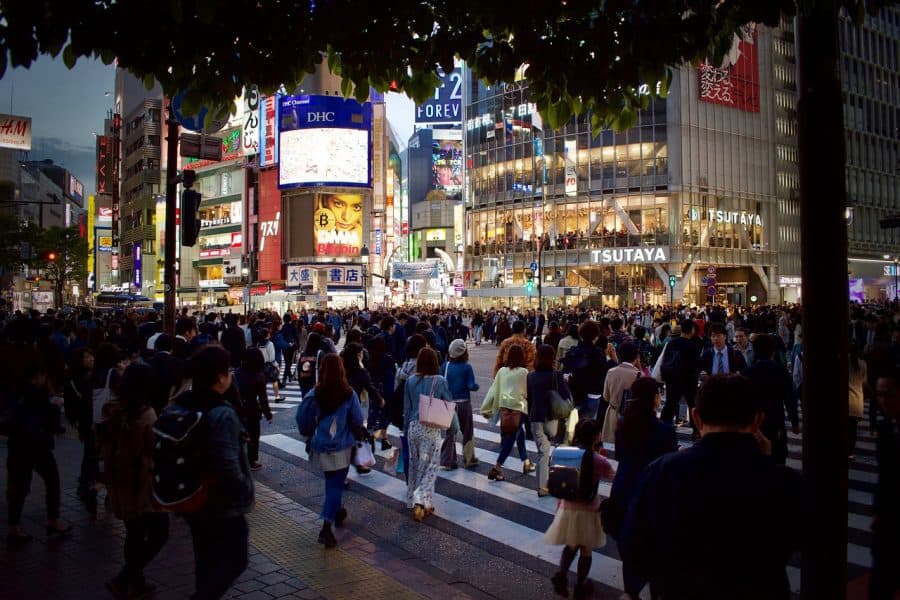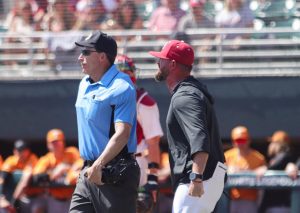Japanese fusion genre gets new life in the 2010s
September 27, 2019
City pop is one of the great crossroads of music: it’s where the East meets the West, where R&B and jazz meets disco, where the 1980s meet the 2010s. But it’s a subgenre you’ve probably never heard of.
Starting in late 1970s Japan, city pop sprang out of the remnants of the American occupation. Advances in technology and a booming economy gave rise to new recording techniques and synthesized instruments. Cultural imports like jazz, R&B and disco influenced the musicians who were coming of age at the time.
But Japanese artists were distinct from their American counterparts. Mainstream Western disco artists rarely used chords more complex than your average campfire guitarist could handle. Chord extensions common in jazz and more advanced music were practically nowhere to be found.
Unlike American artists, the Japanese did not shun the influences of jazz and the blues. Complex chord progressions full of sevenths and ninths are staples of the city pop genre.
Even thematically, the songs flowing from the Tokyo nightlife never hesitated to confront the experiences of urban melancholy. Songwriters found ways to address the changing times while still producing marketable music. Nationwide hits in Japan had an emotional nuance unlike any American disco tracks of the day.
And though city pop may be better compared to the songs of more contemplative artists like Steely Dan, there is still a difference in the rhythm, in the sound. A difference that may be found in language.
English often lilts in the spoken word. Song lyrics have a tendency to swing like the sound of a train going down a track. This is only heightened by certain regional dialects.
Japanese, on the other hand, is a language of monotone, rapid-fire speech. Words come out in what are known as “straight rhythms,” equally spaced beats of sound. In the combination of Western music and the Japanese language, something had to give.
The result is at once familiar and exotic. Ideas that have been musically stale in America for 30 years sound refreshing. Standard drum beats are given new life in unique syncopations stemming from the language of the lyrics.
Even in 2019, city pop has seen a resurgence in its native Japan, as well as the U.S. Young artists from both nations release music that continues to fall under the genre’s umbrella.
YouTube has been the largest contributor to city pop’s renewed popularity. Microgenres like vaporwave, an aesthetic remix trend that often sampled Japanese songs, flourished on the platform in the early 2010s.
In one of the oddest YouTube phenomena ever, its recommendation algorithm led millions of people to Mariya Takeuchi’s 1984 song “Plastic Love” in 2017. The song only reached #85 on the Oricon charts in the year of its release, but it has raked in over 40 million views on YouTube.
Warner Music Japan, owner of the track, has since taken down the original video, which violated copyright law. The two videos that are still available for viewing are also copyright violations, but YouTube has left those alone thus far.
Warner Music Japan filmed and released a short music video to accompany the first 1 minute and 49 seconds of “Plastic Love” in May 2019. Though the length left fans wanting more, the film could not have more effectively explained why city pop is still reaching audiences today.
While “Plastic Love” is now the most renowned city pop song, the listening doesn’t have to stop there. Some of my top song recommendations for getting into the genre are “Remember Summer Days,” “I’m In Love,” “Telephone Number,” “Angel Touch” and “Lonely Lonely.” These songs are good places to start, but don’t be afraid to dive into the albums as well.
Because of the difficulty of retroactively licensing songs to Spotify and Apple music, older city pop songs will only be available on YouTube. However, newer artists keep updated profiles and uploads on music streaming services for the most part.
The historical and technical knowledge of city pop discussed in this article came from a variety of sources and conversations. The links to sources and further reading can be found below.
For further reading on city pop, check out reporting from Noisey and Electronic Beats.


















![UPDATE | New details have emerged about U.S. Immigration and Customs Enforcement’s arrest of doctoral student Alireza Doroudi.
— Yesterday, a University spokesperson confirmed that a doctoral student was arrested by federal immigration authorities, without providing the student’s name, declining to share specific information due to federal privacy laws.
“International students studying at the University are valued members of the campus community, and International Student and Scholar Services is available to assist international students who have questions,” said Alex House, associate director of media relations for the University. “UA has and will continue to follow all immigration laws and cooperate with federal authorities.”
— An employee at the Pickens County Jail confirmed that Doroudi is being held there, adding that the facility typically sends ICE detainees to a detention facility in Louisiana.
— The Department of Homeland Security provided a statement about Doroudi’s arrest:
“ICE HSI [Homeland Security Investigations] made this arrest in accordance with the State Department’s revocation of Doroudi’s student visa. This individual posed significant national security concerns,” a DHS spokesperson said. The statement did not provide details about why it claimed Doroudi posed national security concerns.
— Students for Justice in Palestine at UA, formerly known as Bama Students for Palestine, said in a statement on social media Thursday that it was “outraged” to learn of his detainment and that he "was not involved, nor has he ever been involved in any organizing or protests related to our organization."
This is a developing story and will continue to be updated. Read the updates at the link in our bio.](https://scontent-iad3-2.cdninstagram.com/v/t51.75761-15/486944895_18492822301025566_6944596333023050206_n.jpg?stp=dst-jpg_e35_tt6&_nc_cat=107&ccb=1-7&_nc_sid=18de74&_nc_ohc=hnp26Pzwsm0Q7kNvgH09W0S&_nc_oc=AdmIBEMuR_aRgaBd00Hlot3E59Vj_4lQyCImLLgp8CLdbxpSmLU25dhU_MO_Zul-qcU&_nc_zt=23&_nc_ht=scontent-iad3-2.cdninstagram.com&edm=AM6HXa8EAAAA&_nc_gid=_0USeySkhQOt0LGblsMXkg&oh=00_AYFmFskPwCqJ-MvJ599phcMpkWa2Ohd4BZtAOUk2qibVbA&oe=67F1BA30)


